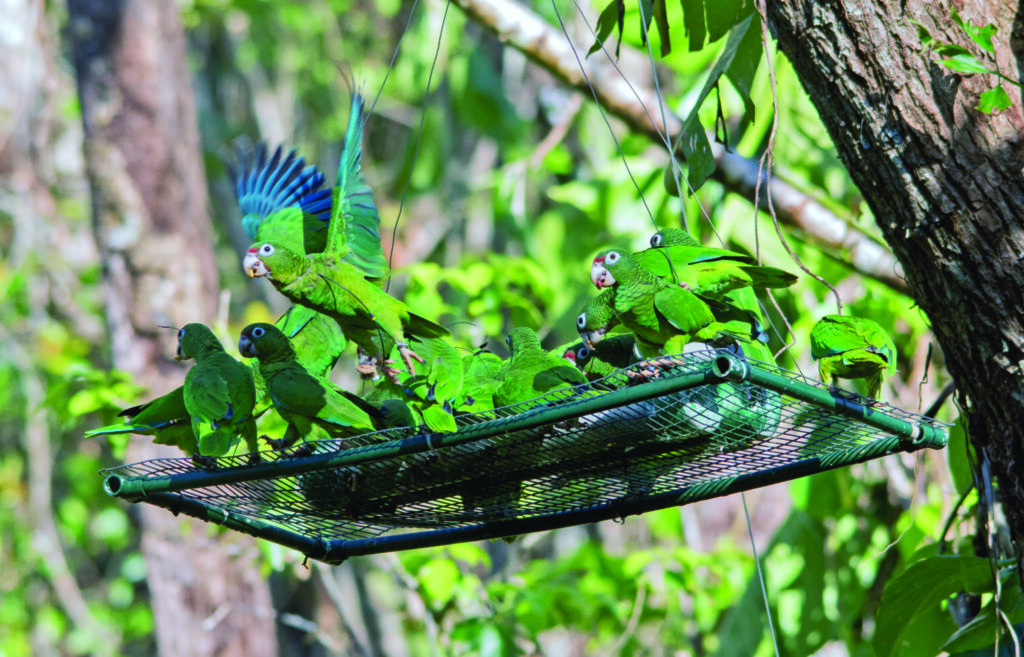Puerto Rican Amazons: Conservation Efforts
At a population of about 700 the Puerto Rican Amazon (Amazona vittata) clings to existence. It is threatened by forest destruction, which is at further risk from increasingly extreme weather events.
For decades, the Puerto Rican Parrot Recovery Project (Proyecto Conservación Cotorra Puertorriqueña de Rio Abajo) has worked successfully to recover the wild population of Puerto Rican Amazons. The World Parrot Trust collaborates with the Puerto Rico Department of Natural and Environmental Resources (DNER) for the critically endangered Puerto Rican Amazon.
The WPT and DNER partnership encompasses several targeted projects aimed at increasing the reproductive success and survival rates of the Puerto Rican Amazon through direct intervention and scientific research.
- Reproductive Research and Development: We provide technical support to advance reproductive studies. This involves developing and refining techniques to enhance breeding success, both in captivity and in the wild. By understanding the factors influencing reproductive rates, we can implement strategies to improve them. Our goal is to develop methods that can be applied both in captivity and the wild to boost reproductive success.
- Breeding-for-Release Program: Our efforts include logistical support for breeding facilities, with a particular focus on the Rio Abajo aviary. The Rio Abajo aviary serves as a cornerstone of our breeding efforts. Here, we implement state-of-the-art breeding practices to produce healthy individuals ready for release. We adopt best practices in captive breeding to ensure that parrots have high survival rates and adaptability when released into their natural habitats. Collaborations with local and international partners facilitate knowledge exchange and resource sharing. Extensive nest management practices such as supplemental feeding and fostering captive-born chicks into wild nests help ensure that the wild population is recovering at a steady rate.
- Artificial Nest Boxes: Increasing the availability of safe nesting sites is crucial for encouraging natural breeding in the wild. We support DNER in installing artificial nest boxes in strategic locations, continuously monitoring and maintaining them to ensure their effectiveness. These boxes are regularly monitored for usage and success, providing a safe and secure environment for breeding. Assisting with maintenance and adjustments based on collected data ensures their long-term viability and effectiveness. Data collected from these installations helps us refine our approach and improve success rates.
Our collaboration with DNER is integral to the comprehensive strategy aimed at recovering the Puerto Rican Amazon population. Through focused research, effective breeding programs, and strategic habitat interventions, we strive to secure a future for this endangered parrot in its natural habitat.
IUCN/CITES Status: Critically Endangered / Appendix I
Population: About 700 individuals, including wild birds and those in a breeding program.
Range: Puerto Rico and formerly neighbouring islands of Mona and Culebra.
Natural history: This species was formerly found in all vegetation types from mangrove to montane forest and dry forest to the south of Puerto Rico. The remnant population is between 200-600 metres in moist montane forest. The parrots take seeds, fruits, flowers and leaves from nearly 60 plant species. Breeding in the wild is from February to June in tree cavities.

